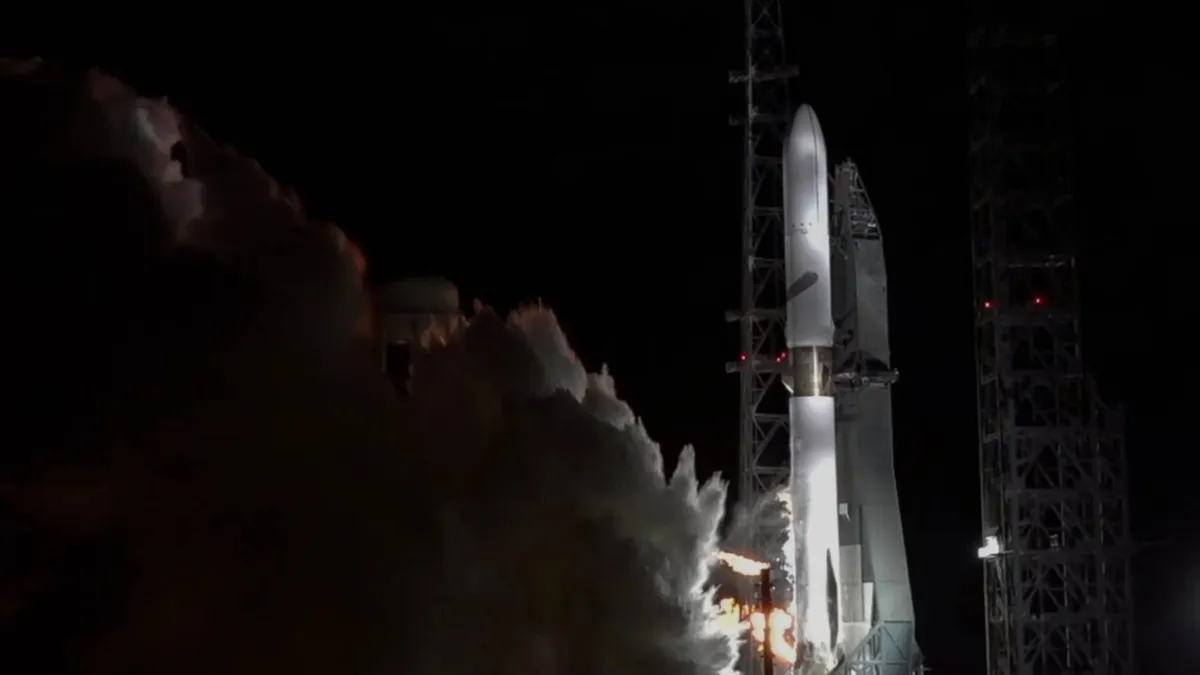
The road to the second flight of Blue Origin’s New Glenn rocket has become significantly clearer following a successful test-firing of its seven main engines on a launch pad at Cape Canaveral Space Force Station, Florida, on Thursday night. At precisely 9:59 PM EDT (01:59 UTC Friday), the New Glenn rocket ignited its seven BE-4 main engines, demonstrating robust performance as they burned for an impressive 38 seconds while the rocket remained firmly on the ground. This test was highlighted in a social media post by Blue Origin, marking a crucial milestone in the rocket's preparation for its upcoming launch.
This hold-down firing of the first stage engines represents the final major test of the New Glenn rocket prior to its launch day. Previously, Blue Origin had successfully test-fired the rocket’s second-stage engines. While officials have not yet confirmed a specific target launch date, sources indicate that the rocket could be ready for liftoff as soon as November 9.
“Love seeing New Glenn’s seven BE-4 engines come alive! Congratulations to Team Blue on today’s hotfire,” expressed Blue Origin's CEO, Dave Limp, in a post on X. The test demonstrated that the engines operated at full power for 22 seconds, producing nearly 3.9 million pounds of thrust. Limp noted that engineers extended the test-firing duration and deliberately shut down some of the BE-4 engines to simulate the booster’s landing burn sequence, which is crucial for Blue Origin’s aim to achieve a successful touchdown on a barge in the Atlantic Ocean.
Blue Origin is keen on recovering the New Glenn first stage during its next flight after a failed landing attempt on the rocket’s inaugural mission in January. Plans are in place to reuse this booster for the third New Glenn launch scheduled for early next year, which aims to propel Blue Origin’s first uncrewed Blue Moon lander toward the Moon. Should Blue Origin fail to successfully land this rocket, it may delay the availability of a new first-stage booster until sometime in 2026.
With the test-firing successfully completed, Blue Origin’s ground crew will proceed to lower the towering 320-foot-tall (98-meter) rocket and roll it back to a nearby hangar. Here, technicians will conduct a thorough inspection of the vehicle and replace its payload fairing with another clamshell, which will house two NASA-owned spacecraft set to embark on their journey to Mars.
The twin spacecraft are part of NASA’s Escape and Plasma Acceleration and Dynamics Explorers (ESCAPADE) mission. This project aims to investigate the interactions between the solar wind and Mars' magnetosphere, a process believed to have driven atmospheric escape and contributed to the planet's transformation from a warmer, wetter world to the dry, rust-colored desert it is today.
Nasa is benefiting from a cost-effective deal with Blue Origin for the launch of the ESCAPADE mission, paying just $20 million, which is significantly less than what a dedicated launch on another rocket would cost. However, this arrangement comes with increased risk, as the New Glenn rocket is only in its second flight and has yet to receive certification from NASA or the US Space Force for high-priority government launches. Fortunately, this risk is manageable, given that ESCAPADE falls within a new category of relatively low-cost solar system missions, with a total mission cost below $80 million.
Typically, Mars missions can only launch during specific windows that occur approximately every 26 months when Earth and Mars align favorably. The ESCAPADE mission has been scheduled to launch outside of this optimal timeframe; therefore, the twin probes will remain close to Earth until next November when they will fire their engines to commence their journey to the red planet. The two spacecraft, constructed by Rocket Lab, only weigh slightly more than a ton, which is about 15 percent of the New Glenn rocket's total payload capacity for the ESCAPADE mission.
Once they reach Mars in September 2027, the ESCAPADE spacecraft will commence their scientific observations a few months post-arrival, significantly contributing to our understanding of Mars and its atmospheric dynamics.